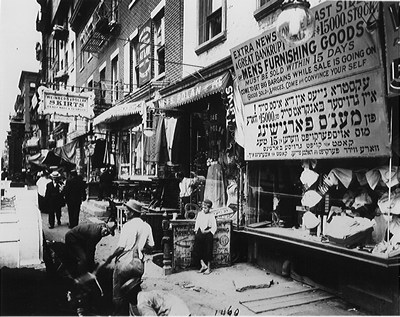
- Yiddish has been the language of European Jews for a millennium.
- It is traditionally used in books for women and non-elite men, and for women's prayers.
- It is spoken by ultra-Orthodox communities, Jewish and non-Jewish revivalists worldwide, and still in home shtetls.
- It is currently performed in klezmer and other music as well as plays and films.
- It was once a major language of Jewish labor unions, plus socialist, anarchist, Zionist, and anti-Zionist activists.
- It is linguistically fascinating, with Germanic, Semitic, Slavic, and romance elements.
- It is important for understanding Hasidism past and present.
- It boasts a remarkable but mostly untranslated modernist literature.
- It helps preserve Jewish cultural heritage after the Holocaust.
- It counts toward the German major.
- It's useful for research in American, labor, German linguistic, East European, and Soviet history.
- It's easy to learn if you already know English or German!
A sample of (Romanized) Yiddish writing from Barry Goldstein’s translation of The Hobbit: “In a lokh in der erd hot gevoynt a hobit. Nit keyn bridke, koytike, nase lokh, ongefilt mit di ekn fun verem un a dripendikn reyekh, oykh nit keyn trukene, hoyle, zamdike lokh mit gornisht vu zikh avektsuzetsn tsi vos tsu esn: zi iz geven a hobit-lokh, un dos heyst bakvemlekhkeyt.”